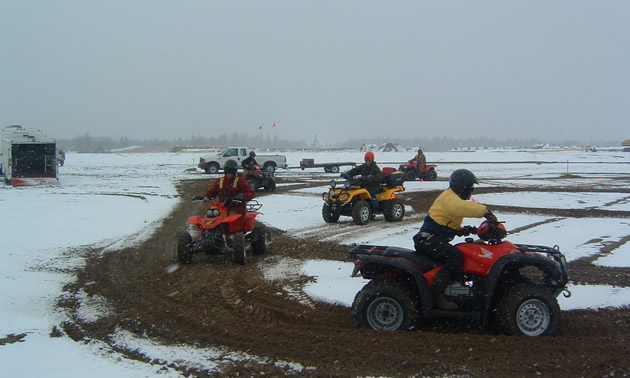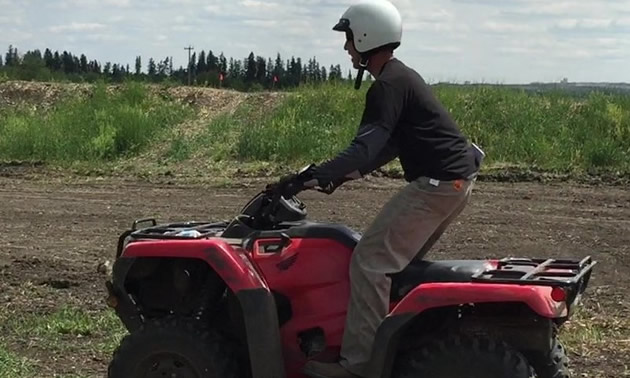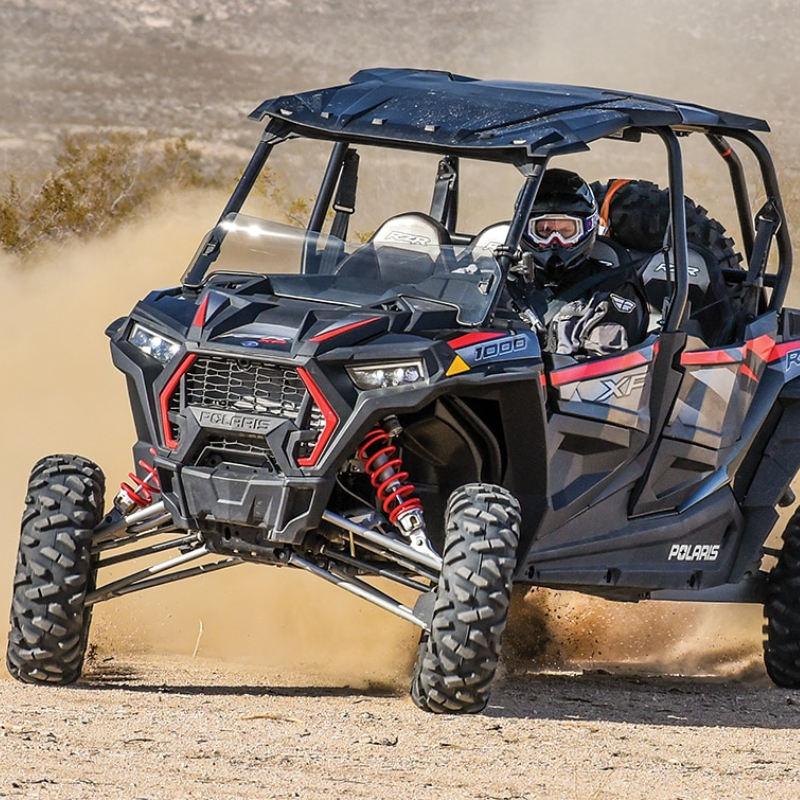I have rolled a quad, flipped a quad and crashed a quad into a trench cut across a decommissioned logging road.
Chris Poirier, director of training with St. John Ambulance said, “After knife cuts, quads and snowmobiles cause the most common wilderness accidents and can be very serious, including head and spinal cord injuries.”
For most quad riders, their first ride is a quick rip on a freshly purchased or borrowed machine. They haven’t even taken the time to read the most-important owners’ manual before hitting the throttle. Accidents are caused by inexperienced operators and unsafe operation––a result of not thinking through what might happen next.
Maybe it’s time to take a quad operating course. I took two.
Start training online
The ATV Course online is a great place for new riders to get started or for experienced riders to refresh their riding knowledge. The course costs $49 and takes at least three hours to complete. Instruction covers the theory behind the finer points of operation like the best way to approach and drive over downed logs, run over rocky terrain, and deal with water crossings and mud. I learned most of these skills through trial and error, heavy on the error.
Tread lightly and operate courteously
The online course covers “tread lightly” concepts and first aid and outdoor survival advice in addition to safe ATV operating. Tread lightly means doing as little damage to the environment as possible, such as staying on the established trails, going easy on the throttle when the ground is soft, crossing streams at 90 degrees and only at established ford sites, completely staying out of lakes and ponds, and packing out everything packed in.
Operating courteously and safely go hand in hand. By using standard hand signals, you clearly communicate your intentions to your crew who is following and to the folks you meet on the trail.
Get and use the right protective gear
After completing the online course, I booked the full-day practical course near my home and loaded my quad up for the day. The documents sent to riders prior to the course listed the personal protective equipment required for course participants: a D.O.T.-approved helmet less than five years old, gloves, goggles, rain gear and boots that cover your ankles and are 15 centimetres (six inches) high. After considering the fact that my helmet was purchased with my quad, I bought a new helmet and upgraded my goggles to accommodate eye glasses.
Add skills to knowledge
The hands-on course costs about $300 and can be booked at www.atvsafety.ca. Participants learn the safe operation of ATVs in a combination of outdoor classroom time and hands-on quad operation. The full-day course is geared toward industry operators. Graduates receive a Canada Safety Council certificate including a registration number. The course covers general safety practices, specific riding ability and skill development to handle your machine in a variety of situations encountered on the trail. The course identifies the responsibilities of ATV riders as governed by the Alberta Government Occupational Health and Safety Code (Part 19) and Traffic Safety Act - Off-Highway Vehicle Regulation, which satisfies employers and contractors that ATV operators have had appropriate training to safely operate the quad. My fellow participants were pipeliners, geologists and a biologist, and all were being deployed in resource sectors. I was there to learn how to use my quad in the context of a recreational user.

Participants practise practical ATV manoeuvres. — Courtesy of ATV World
The hands-on course focuses on every aspect of ATV operation from options for safe loading and unloading to climbing and traversing hills, making safe directional manoeuvres and driving the quad over obstacles like fallen trees.
Quads have facilitated family fun with my adult boys for over a decade. The completion of these two courses has made me more safety conscious in my quad operation. I will be encouraging my crew to take the courses so we are all dialed into safe operations. I would encourage you to do the same.
The Canadian ATV Operators Course recommends operators build a pack that includes the following:
- A small tool kit or a multi-tool
- Flat tire sealant and a tire pump or compressed air
- Spare spark plugs and spark plug wrench
- Fire-starting equipment
- High-energy food
- Water
- A map of the area and a compass
- Brightly-coloured flagging tape
- Cord or string
- Warm clothing and/or rain gear
- A few large garbage bags
- A plastic whistle
- One or two knives
- Soap or sanitizing lotion
- Prescription medication (if needed)
- A first aid kit
- A GPS and/or SPOT locator device
- Water-purifying tablets or other water purifiers
- Flashlight with extra batteries
- Hatchet or collapsible hand saw
- Fully charged cell phone
- Duct tape
-
Zip (quick) ties
ATV safety training is available through these organizations:
British Columbia: www.bcatvtraining.ca
Alberta: www.atvsafety.ca
Saskatchewan: www.sasksafety.org/training/vehicles-and-traffic-training/atv-utv
Manitoba: www.safetyservicesmanitoba.ca
Ontario: https://ofatv.org/atv-safety








Comments